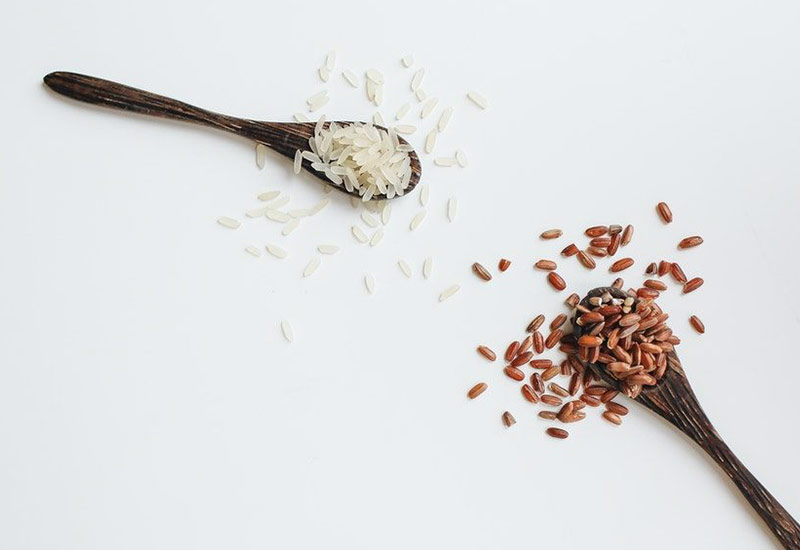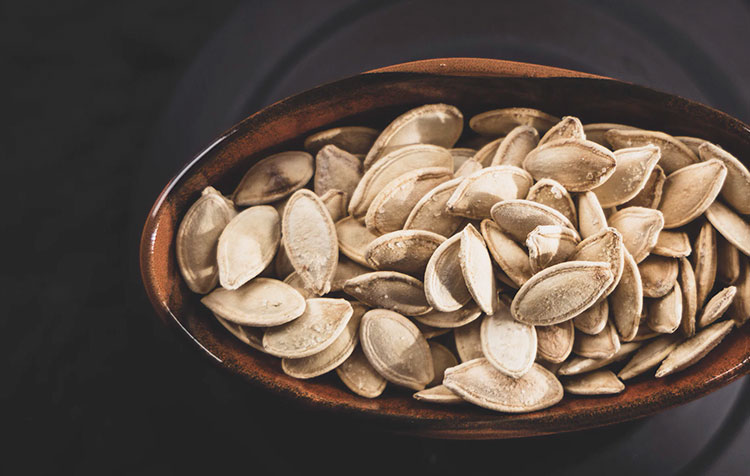Maybe you just heard about the trace element chromium for the first time and now you want to know more about it? Then you are exactly right in this article! Because here I present the most important details about the mineral. At the beginning, you can get an overview with the help of the nutrient fact sheet and then acquire sound knowledge about absorption, daily requirement, physiological function, overdose or deficiency, as well as chromium-containing foods. Towards the end, we will take a look at what vegans and vegetarians should pay attention to, whether supplementation makes sense in general, and which questions about chromium are asked particularly frequently.
Here is in advance a Overview for you:
Notice: This article is not a substitute for medical advice, but only provides general information about chromium. Please consult your doctor if you feel unwell or want to prevent health problems with medical care.
Chrome PROFILE at a glance
Assignment: Trace element, element category transition metals
Important for: Metabolism of proteins, fats and carbohydrates, antioxidant
Daily requirement: 20-100 µg/day from the age of 19.1,2,3,4,5
Recording: through food intake or dietary supplements
Overdose: estimated maximum intake of 250-300 µg/day6,7
Deficiency symptoms: Among other things, disturbances of metabolism and nervous system (so far only in studies)3
Food: Brazil nuts, whole wheat bread, corn, white beans, hazelnuts
Nutritional supplement: As capsules or tablets
About the absorption of chromium

This article is about trivalent chromium (also called chromium III), a Healthy nutrient. However, it is free from the toxic chromium VI, which is used, for example, in the tanning of Leather can arise. The nutrient is a trace element, but the study situation is still relatively controversial and inconclusive.3,5
Chromium is accumulated mainly in the liver, spleen and bones and excreted in the urine.3 The absorption of the trace element is very low at 0.4 to 2.5 percent.3,4 Whether or not the nutrient is actually essential, i.e. necessary for life, is still uncertain according to current studies.
How much chromium is healthy?
Due to the still rather unclear study situation, there is a wide range of recommendations. One particularly broad recommendation comes from the German Society for Nutrition (DGE) out, because this recommends a Chromium intake of 30 to 100 µg per day.1 The amount of intake required also appears to increase with the amount of carbohydrate supplied.8
The National Institutes of Health (NIH) and the Food and Nutrition Board (FNB) issue differentiated recommendations for genders - namely 30 to 35 µg for men and 20 to 25 µg for women. The cooperating institutions recommend for Pregnant and breastfeeding women an increase to 30 and 45 µg of chromium per day, respectively.3,4,5
In contrast, the European Food Safety Authority (EFSA) not yet issued a reference value for the intake of chromium, since it is currently not known whether chromium is actually essential for life. However, this view comes strongly from the perspective of avoiding a potential deficiency rather than looking at what positive effects chromium can have.2
Here you can still find the reference values issued by the DGE for Children and teenagers.
| Children and teenagers | Recommended intake in µg |
| 0 to under 4 months | 1-10 |
| 4 to under 12 months | 20-40 |
| 1 to under 4 years | 20-60 |
| 4 to under 7 years | 20-80 |
| from 7 years and older | 30-100 |
What role does chromium play in the body?
The trace element appears to be present in various Metabolic processes to play a role. Among other things, the metabolism of the Proteins and Fat influenced. Furthermore, the mineral also appears to have an effect on the Carbohydrate-metabolism by increasing the effect of insulin and reducing the Glucose tolerance improved.3,4,8,9 This is also interesting for diabetics, because there was already a study that showed the connection between chromium and the nutritional disease has investigated. In it, diabetes patients received high-dose chromium and BiotinThis increased insulin sensitivity and thus regulated blood glucose levels.
Through the Regulation of the blood sugar level it also comes to a Reduction of cravings.10 Consequently, one can assume a fairly high probability that the nutrient is also present in the healthy slimming can help. This assumption has already been confirmed in an analysis in which several studies were carried out in which overweight people received dietary supplements with chromium.11
The Chromium function summarized:
- Influence on carbohydrate, protein and fat metabolism
- Increase glucose tolerance
- Improvement of the effect of insulin
- Regulation of the blood sugar level
- Reduction of cravings
What is the risk of overdose?
The NIH and FNB have not yet set a maximum intake limit, as they are no negative health effects due to a high intake of chromium.3,4,5
The EFSA has defined a Tolerable Upper Intake Level of 300 µg chromium per day, but the basis for this is a study with rats. Since the metabolism of rats is difficult to compare with that of humans, I consider this limit questionable. Overall, it can be concluded that chromium, if at all, is a Low toxicity has.
Tip: At Animal testing you will find a detailed ethical discussion of experiments on animals.
Can chromium deficiency occur?
So far, no chromium deficiency has been found in healthy people, which is why a Deficiency unlikely is. Theoretically, a chromium deficiency could lead to disturbances in the metabolism of proteins and fats, as well as impaired glucose tolerance, and thus possibly to the development of type 2 diabetes.3,5
What foods contain CHromium?

There are many foods that are rich in the healthy trace element. Among all of them, rice is the absolute front-runner. With a daily requirement of around 35 µg, 100 grams of rice contain more than 19 times the daily requirement.
In the list below you will find these and many more good ones, Vegetable sources of chromium:
- Rice (680 µg per 100 gram)
- Brazil nuts (100 µg per 100 gram)
- Whole grain bread, whole grain products (49 µg per 100 gram)
- Corn (32 µg per 100 gram)
- Pear (27 µg per 100 gram)
- Broccoli (16 µg per 100 gram)
- Hazelnuts (14 µg per 100 gram)
- Almonds (12 µg per 100 gram)
What do vegans need to know?
Since deficiency symptoms have not yet occurred in any healthy population group, the same applies to vegans. Consequently, the DGE Chromium not a potentially critical nutrient classified in vegan diet.12 With a varied, plant-based diet, in which you regularly eat rice, whole grains or nuts, for example, you can therefore cover your chromium requirements fairly easily.
Are there reasons to supplement chromium?
Supplementation to rule out chromium deficiency is normally superfluous. However, in a few cases it may be useful to take supplements containing chromium. If you have problems with your glucose tolerance, diabetes or cravings, you can try to improve your situation with supplementation.
I emphasize naturalness in my supplements, i.e. the use of ingredients that are as organic as possible. If you want to supplement iron, for example, capsules with powder from Buckwheat germ an.
Buckwheat naturally contains a lot of chromium, Iron and molybdenum, making it the perfect foundation for a chromium supplement. In addition still Vitamin C added. You can get an appropriate dietary supplement here*.
Chrome FAQ: frequently asked questions
Is chromium harmful to the body?
It depends on the particular chromium variant. Trivalent chromium is a natural, healthy nutrient, while chromium VI is a toxin.
When should you take chromium?
If dietary supplementation with chromium makes sense from a medical point of view, it should be taken with meals, as this optimizes absorption.
How much chromium per day?
The range of official recommendations is quite wide and ranges from 20 to 100 µg per day. Depending on the carbohydrate intake, your need increases, so it can be quite reasonable to supply relatively high amounts of chromium.
What contains a lot of chromium?
Rice has a particularly high chromium content. Other good sources of chromium are whole grain products, corn, broccoli and nuts.
Has anyone taken off with chrome?
Yes, there are already several studies that have proven that high-dose chromium helps overweight people lose weight.
Chromium - A valuable Trace element for your health
The healthy mineral can help you optimize your metabolism and possibly even lose weight. Fortunately, most people already get sufficient amounts of chromium through a varied diet. In particular, you can enjoy a high chromium intake through regular consumption of rice.
If you have your Strengthen health naturally and holistically you will find the articles on Forest bathing, Barefoot running or Intermittent fasting guaranteed helpful and interesting.
Feel free to leave me a comment with any questions or criticisms about chrome.
All the best,

PS.: If you feel like going green with your diet, I recommend you read the article Shape nutrition sustainably. If you want to dig deeper into the topic of nutrients, then take a look at the articles on Vitamin A, Vitamin B12 or Calcium.
References:
1 Deutsche Gesellschaft für Ernährung e. V.: Copper, manganese, chromium, molybdenum, https://www.dge.de/wissenschaft/referenzwerte/kupfer-mangan-chrom-molybdaen/?L=0, [07.01.2022].
2 European Food Safety Authority: Scientific Opinion on Dietary References for chromium, https://efsa.onlinelibrary.wiley.com/doi/epdf/10.2903/j.efsa.2014.3845. [07.01.2022].
3 National Institutes of Health. Office of Dietary Supplements: Chromium. Fact Sheet for Health Professionals, https://ods.od.nih.gov/factsheets/Chromium-HealthProfessional. [07.01.2022].
4 The National Academy Press (2009): Dietary Reference Intakes. The Essential Guide to Nutrient Requirements, https://www.nap.edu/catalog/11537/dietary-reference-intakes-the-essential-guide-to-nutrient-requirements. [07.01.2022].
5 Food and Nutrition Board (2018): Micronutrients: chromium, https://foodandnutrition.org/from-the-magazine/micronutrients-chromium. [07.01.2022].
6 European Food Safety Authority: Tolerable Upper Intake Levels for Vitamins and Minerals, https://www.efsa.europa.eu/sites/default/files/efsa_rep/blobserver_assets/ndatolerableuil.pdf. [07.01.2022].
7 Bundesamt für Risikobewertung: Höchstmengenvorschläge für Chrom inklusive Nahrungsergänzungsmittel, https://www.bfr.bund.de/cm/343/hoechstmengenvorschlaege-fuer-chrom-in-lebensmitteln-inklusive-nahrungsergaenzungsmitteln.pdf. [07.01.2022].
8 Center of health: Determine mineral deficiency: Diagnosis, https://www.zentrum-der-gesundheit.de/krankheiten/weitere-erkrankungen/mangelerscheinungen/mineralstoffmangel. [07.01.2022].
9 European Food Safety Authority: Scientific Opinion on the substantiation of health claims related to chromium and contribution to normal macronutrient metabolism, maintenance of normal blood glucose concentrations, contribution to the maintenance or achievement of a normal body weight, and reduction of tiredness and fatigue, https://efsa.onlinelibrary.wiley.com/doi/epdf/10.2903/j.efsa.2010.1732. [07.01.2022].
10 Center of health: stop cravings and hunger attacks easily, https://www.zentrum-der-gesundheit.de/bibliothek/abnehmen/abnehmen-uebersicht/heisshunger-stoppen. [07.01.2022].
11 C. Tsang et al.(2019): A meta-analysis of the effect of chromium supplementation on anthropometric indices on subjects with overweight or obesity, https://doi.org/10.1111/cob.12313. [Jan 07, 2022].
12 Deutsche Gesellschaft für Ernährung e. V.: Supplement to the position of the German Nutrition Society regarding population groups with special nutritional needs, https://www.dge.de/wissenschaft/weitere-publikationen/dge-position/vegane-ernaehrung/?L=0 [07.01.2022].





